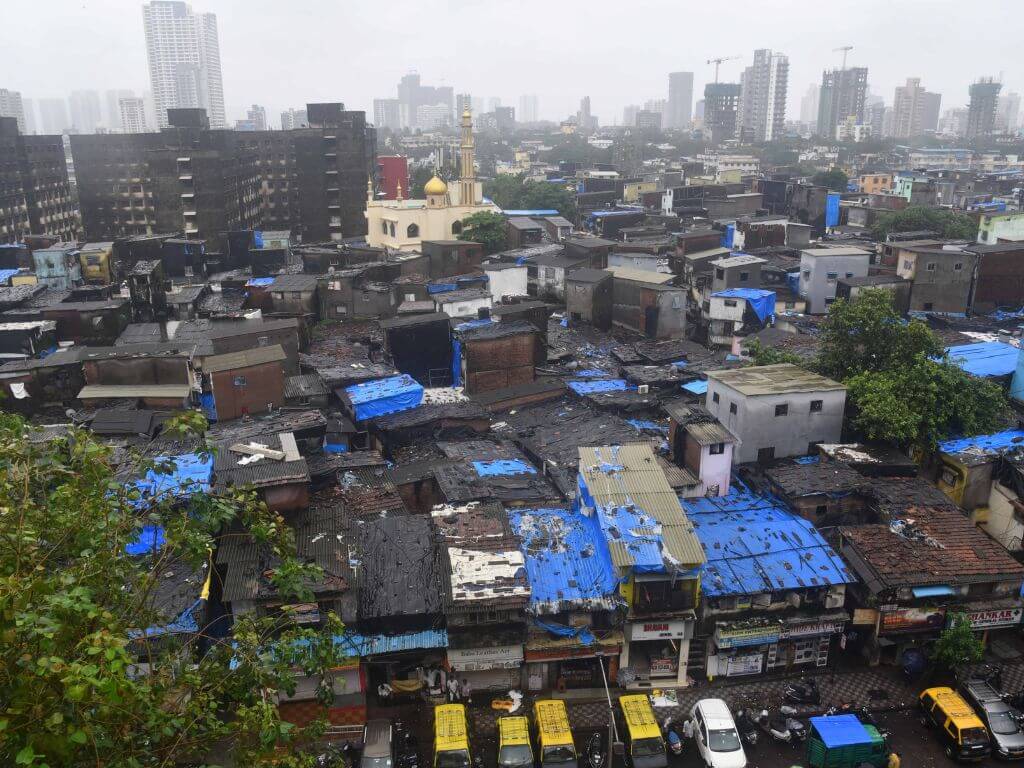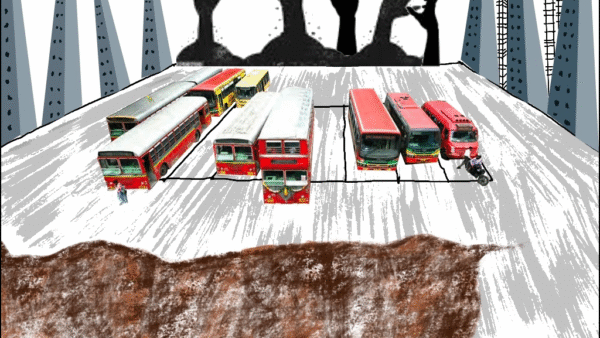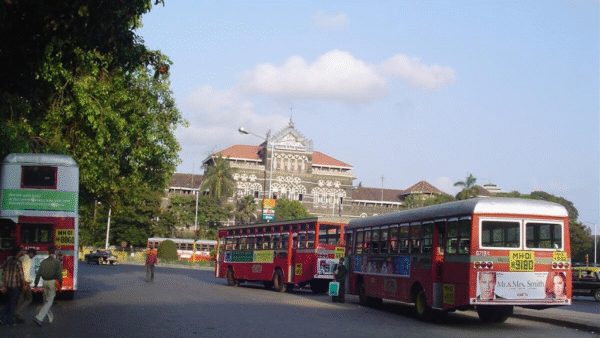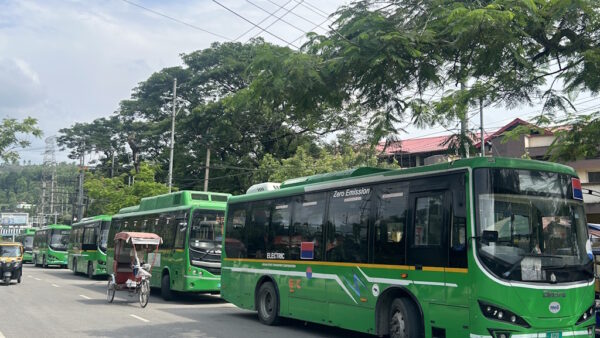In what is Mumbai’s single-largest slum redevelopment project in Dharavi, a million people and thousands of small business owners who are meant to be rehabilitated in formal structures do not fancy what their future could look like. The last six months first brought rumours, then information slowly trickled in about the proposed redevelopment project in the settlement. Residents have held a few meetings to explore the options they have, social activists and political parties opposed to the Maharashtra government have organised meetings too but these are yet to turn into a grassroots movement for housing justice in what is arguably among the largest informal settlements in the world.
While uncertainty, opacity and disconnect from the proposed project run high among residents and businesses in Dharavi, satisfaction and excited anticipation courses through the corridors of the Maharashtra government that the Dharavi Redevelopment Project is finally off the ground – almost 20 years after the idea was put on the table. The Government Resolution formally appointing Adani Realty as the lead developer for the project was issued in mid-July, seven months after the conglomerate won the re-tendered bid last year.
A few hundred people from Dharavi resettled in buildings in the next few months would give the three-header Maharashtra government election talking points for the 2024 campaign. With the lead developer initially investing Rs 5,069 crore, the seven-year-long complex project spread over hundreds of acres in the heart of Mumbai is expected to yield thousands of crores of profit.
The scale and sweep of the Dharavi Redevelopment Project are unprecedented; it is the mother of all redevelopment projects in Mumbai. As it gets off the ground in a city characterised by redevelopment projects of slums and old buildings on virtually every street, its implications for redevelopment, for Dharavi and for Mumbai are many.
At this time, what is reasonably certain is that the eligible settlers of Dharavi will get a self-contained flat of around 400 square feet; except this, there is no clarity about any aspect including how the thousands of businesses in Dharavi will be accommodated, what the fate of lakhs of ‘ineligible’ dwellers will be, whether the city will benefit in anyway by getting public open spaces and so on. The developer, though, going by the slum redevelopment parameters in Mumbai, will have two-thirds or more of the nearly 650 acres (595 acres in Dharavi settlement and 47 acres of adjacent railway land) to develop commercially and rake in enormous profits.
It is important to note that nearly 79 percent of the land in Dharavi is owned by the Brihanmumbai Municipal Corporation (BMC) and the state government. Of this, nearly 61 percent is BMC land but the civic body has virtually no say in the redevelopment process.

Credit: Google Earth
Makeover or takeover?
Dharavi, the marshy village of fisherfolk in British Bombay, expanded as the city attracted migrant workers and cottage businesses to become one of the largest informal settlements in the world but lacked basic amenities and tenurial security for more than half of its estimated million population. Parts of Dharavi were demolished in the 1970s and early 80s. A visit by the then Prime Minister Rajiv Gandhi in 1985 set off the Slum Upgradation Programme (SUP) as part of the Prime Minister’s Grant Project; Rs 35 crore was allotted to Dharavi and slum dwellers were encouraged to form cooperatives to undertake redevelopment, but the project soon ran out of steam or, housing activists pointed out, was allowed to fail.
The next round of redevelopment was in 1995 by the Shiv Sena-BJP government. This model took off two years later with the establishment of the Slum Rehabilitation Authority (SRA) and was grounded in two beliefs that became policy:
- First, that a horizontal low-rise settlement or slum ecosystem could be replaced by high-rises but of two widely differing typologies and amenities – shorter ones using cheaper materials and densely located to “rehabilitate” slum dwellers and taller ones built with lavish care and world-class amenities to be sold in the open market as commercial or residential premises. To provide “rehabilitation” tenements free of cost, the developer was incentivised with high Floor Space Index, among other benefits, to be used on more than two-thirds of the remaining land.
- Second, this redevelopment model made a clear departure from previous attempts to rehabilitate slum dwellers in that the government largely withdrew from housing – affordable housing – and out-sourced it to private builders and corporate firms. In the first flush of liberalisation in the 1990s, the government believed it was all right to only play a regulatory role in the redevelopment process which was largely determined by private interests and profits.
Effectively, the SRA model privatised the creation of housing stock, a public good, while condemning residents of redeveloped slums to an existence as bad or worse than in slums, as studies have shown. In the process, it undermined the rights of slum dwellers to affordable and quality housing as well as their participation in the redevelopment process. Other than 70 percent of residents of a settlement or slum signing on the agreement with a private builder, there was little they could do.
In out-sourcing its responsibility to private and corporate interests, under the guise of making land available in a so-called land-starved city, the government fell woefully short on its remit on affordable housing. Though the SRA policy was put in place by the Sena-BJP government, successive governments have gone along with it, tinkering only with minor aspects such as the size of the tenement and so on. In the post-liberalisation Mumbai, “the framework of ‘enabling markets’ and the concomitant downsizing of the public sector means that public policy is focused single-mindedly on developing means to get the private sector to achieve social goals…The government’s commitments are increasingly entangled with the interests of land owners and developers,” observed architect and scholar Hussain Indorewala in this paper[1] Dharavi’s makeover must be seen in this context.

Photo: Jashvitha Dhagey
If, in the past 25 years, the SRA model did not yield sufficient number or quality affordable housing in Mumbai – one of the hottest property markets in the world with the largest number of slum residents – then it is unlikely to do so on a massive scale in Dharavi. In a sense, the privatisation of Mumbai’s housing sector has reached its peak with the Dharavi Redevelopment Project. The State is content to be the 20 percent partner in the Special Purpose Vehicle created – Dharavi Redevelopment Project Authority – and provide the developer with an unprecedented level of facilities and concessions.
The inevitable question is: Is this redevelopment a makeover of Dharavi or a takeover of massive public land by private interests? No one is holding breath on that one.
The people of Dharavi
Given the scope, scale and size of the Dharavi Redevelopment Project, people’s participation should have been robust and rigorous. There are, after all, a million and more people’s lives and livelihoods at stake. However, people’s participation has been conspicuous by its absence in the process so far. Why participation, residents of Dharavi have had to struggle to even get basic information about the project.
Among the many questions they have is about the need for yet another survey – fourth in recent years. Three surveys were conducted before Adani Realty came on board; the last one enumerated nearly 60,000 families as eligible to receive free houses in the redevelopment plan. What about the rest, some of whom have been living here for more than 20-30 years? Will the cut-off year for eligibility be taken as 2001, will those who settled here between 2001 and 2011 be considered eligible to get houses for a small sum?
Meetings are being organised among those who settled here in the past two decades to ascertain whether they will be counted as eligible or not, those living on rent also face similar uncertainty. These meetings gathered steam in the past few weeks across many of Dharavi’s 85 nagars or neighbourhoods. Political parties opposed to the government of chief minister Eknath Shinde (Shiv Sena), deputy chief ministers Devendra Fadnavis (BJP) and Ajit Pawar (NCP) are all in the fray seeking to capitalise on the emotions and demands of residents.
So far, the opposition to the redevelopment is not significant or strident enough to halt the behemoth in its tracks. Residents agree that Dharavi, with one toilet shared by 1,400 people and one tap by 15-20 people a day, should be redeveloped to provide better amenities; they question the process and its opacity, they are disturbed that plans are made without their knowledge and participation, and that there are no assurances that their businesses will be provided space too.
Not all the existing units follow the law to the letter and several cut corners too. However, estimates are that the businesses post an annual turnover of $650 million to $1 billion, and directly employ more than 2,50,000 people. The lack of clarity about businesses being provided alternative spaces has irked residents. The redevelopment, they point out, is not merely about replacing houses but about creating an entire ecosystem of homes with workspaces and other facilities which now sustain Dharavi’s businesses and 15,000 single-room factories.
If Mumbai’s SRA model is applied, then the Dharavi redevelopment project would use only 30-40 percent of the nearly 647 acres for rehabilitation buildings – around 190-240 acres – leaving a bounty of 400-450 acres of prime land for commercial exploitation. With property prices in the neighbouring upmarket Bandra Kurla Complex (BKC) at a staggering Rs 80,000 to Rs one lakh per square foot, the total value of this free sale land would be unimaginably large for the developer. Incidentally, sector 5 of Dharavi is a stone’s throw away from H-Block of BKC.

Photo: Maitreyee Rele
That Dharavi’s redevelopment is less about people and more about land is evident from the fact that the project gathered steam as land values escalated in the areas which abut the settlement, especially BKC which lies to its north-east. The BKC is Mumbai’s most sought-after and expensive commercial-residential-recreation real estate. On the other side, in Matunga and Sion, property prices are in the higher brackets of the city with several coveted luxury residential complexes planned or under construction.
Theoretically, when public land is made available in the city, there is hope of new ecological and social infrastructure being created such as gardens, parks, plazas and so on. When Mumbai’s textile mill land – not entirely contiguous but spread across 600 acres in Dadar-Parel-Lalbaug areas – was opened up in the 1990s, the city did not benefit at all, though in the original formula, one-third was to be allocated to affordable housing and another third to open green spaces.
Dharavi’s land, it bears repetition, is overwhelmingly public with the state government and BMC owning nearly 79 percent. However, available information suggests that the state has not laid down conditions or guidelines for the use of this prime land, or asked for a master land use plan for all of Dharavi to ensure a fair deal for the area and the city. The redevelopment, therefore, will be a private enterprise without participation from Dharavi’s people or fair deal to the state.
To top the land bounty, the Maharashtra government has offered a slew of concessions to Adani Realty[2] to finalise the deal. To begin with, the government paid Rs 800 crore from the coffers of the cash-strapped Maharashtra Housing Area Development Authority (MHADA) for the railway land where the first rehabilitation tenements are likely to be built in addition to the state government developing staff quarters there, the state will refund the GST paid, waive property tax which is usually collected by the BMC, spend on building the infrastructure needed for the project, and most significantly, will not enforce indexation of the Transfer of Development Rights (TDR) created in Dharavi but all redevelopment projects across Mumbai will have to compulsorily buy at least 50 percent of their TDR requirements from Dharavi. As it stands, the state government – public exchequer – loses enormously.
There cannot be a sweeter deal for the developer – and a poorer one for Dharavi’s people and Mumbai.
Cover photo: Dharavi; Credit: Imtiyaz Shaikh




